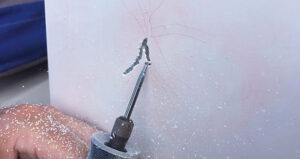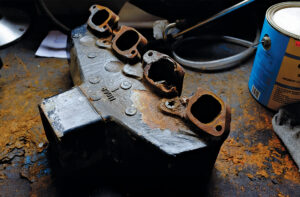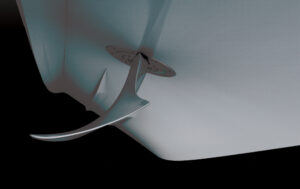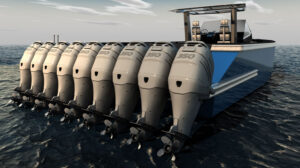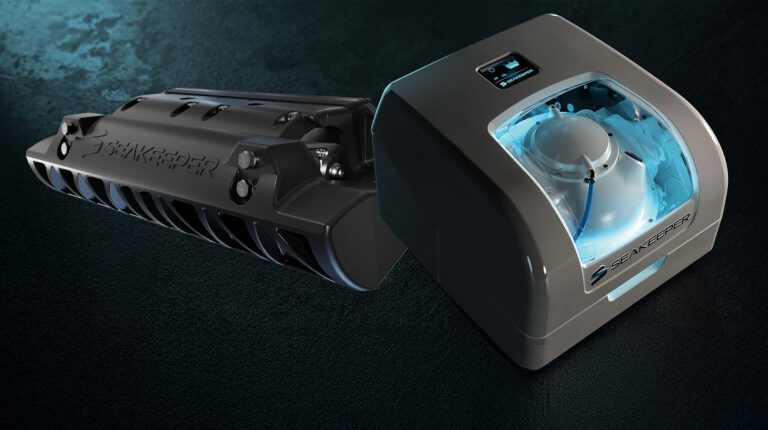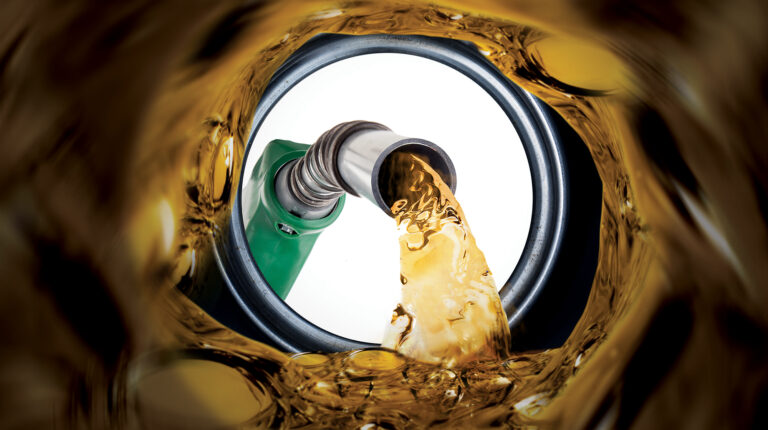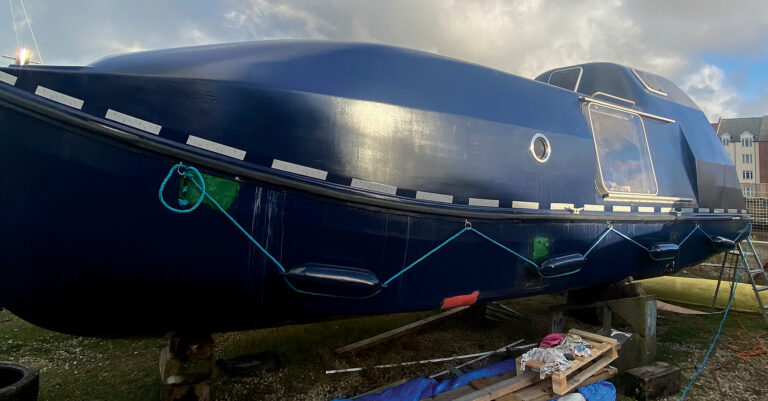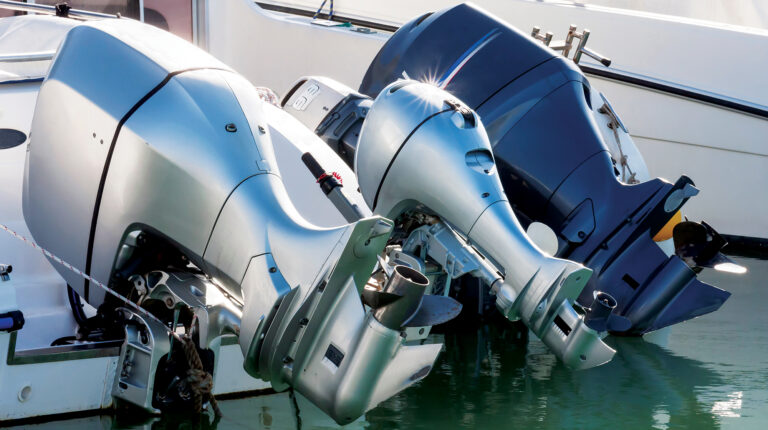Shine On
Paint jobs are expensive, but with just a little care, the shine will last for many years.
When fiberglass began making inroads into production boatbuilding, one of the selling points versus wood was, “You’ll never have to paint again.” Some manufacturers went so far as to suggest there was no longer any need for antifouling: Marine growth couldn’t stick to the slippery gelcoat. (We all know how that worked out.) The instructions for keeping a fiberglass boat shiny were simple: Compound and wax every year. Nobody mentioned that over time, the compound would erode the gelcoat, and eventually you’d have to paint it to restore the shiny finish.

I’m not here to trash gelcoat. Maintaining it correctly from the outset, meaning regular sealing or waxing to repel dirt, along with minimal use of abrasives, will keep gelcoat shiny for a long time—but not as shiny as a new coat of linear polyurethane (LP) paint. You can’t beat professionally applied LP for that porcelain finish most boat owners love. And with only minimal maintenance, the finish can last for a decade or more, which helps amortize the nosebleed-inducing cost of an LP paint job. Using the correct cleaners, polishes and high-tech sealers, making a paint job last isn’t rocket science; it just takes a little elbow grease.
All the major paint manufacturers publish instructions for maintaining finish: Awlgrip, Alexseal and Axalta (maker of Imron, and many other coatings) all have the info on their websites. All three agree that maintaining paint requires regular washing with water and abrasive-free, neutral-pH detergent formulated for cleaning painted surfaces; Awlgrip and Alexseal recommend using their own proprietary cleaners and polymer sealers. They advise using soft cloths, microfiber wash mitts or sponges—if a brush is necessary, bristles should be soft. And finally, they suggest drying the surface after rinsing to prevent water spots, which will make the paint look dull—a bigger problem when using hard water with high levels of calcium and magnesium. (Test kits for hard water cost only a few bucks.)
“Don’t wash painted surfaces with extremely hard water,” said Matt Anzardo, marketing manager for AkzoNobel, manufacturers of Awlgrip. “We recommend purchasing a water softener, especially when caring for dark colors.” Since dark surfaces heat up under direct sunlight, wash them early or late in the day, he added, particularly in tropical areas. When the paint is hot, it’s even more critical to avoid aggressive wash mitts. Whatever the paint color, every three or four months, apply a sealer to repel dirt and stains and absorb UV rays that will fade the color.

What about stains? Awlgrip and Alexseal polymer sealers both remove mild stains, but tough ones require extra effort. Resist the temptation to attack the stain with an aggressive cleaner or solvent, which could damage the paint. Instead, take a gentler approach. Anzardo said to try removing the stain with a diluted mix of one part white vinegar to five parts hot water, gradually adding vinegar until you see results. (The water/vinegar mix is also good for removing dried salt.) Don’t go over a 50:50 mix, and rinse the vinegar off immediately to prevent it drying on the surface; it’s a mild acid and will damage the paint. If vinegar doesn’t work, check the paint manufacturer’s instructions to see which solvents are safe. Don’t use aggressive stain removers designed for gelcoat.
Not everyone follows the manufacturer’s instructions, of course, but some people get years of shine from their paint jobs anyway. JB Turner, president and general manager of Front Street Shipyard in Belfast, Maine, is one of them. “My basic philosophy—and what I do on my own boat that now has 13-year-old topside paint that still looks great—is to not polish with anything for at least the first eight years.”
Every time you polish, explained Turner, you are taking away the clear layer on top of the pigment, which lies against the hull. “As you do that, you are just wearing out your paint job.” Turner expects to repaint his boat in another three years, so he’ll have 16 seasons “with a very shiny paint job” in New England. If you go south, he said, figure on cutting the paint’s life in half. But that still means at least eight years and, even then, the paint could hold out longer under certain circumstances.

Not polishing doesn’t mean Turner does nothing to maintain his paint. He washes the boat regularly, using Windex or a mild cleaner to remove scum, salt and the like. Twice during the boating season, he applies a coat of Permanon to seal the paint surface. Turner said that two coats of Permanon a season work fine in New England. After about eight years, he gives the paint a very light polish annually, along with the two Permanon treatments. “That seems to work great,” he said.
Capt. Carl Gwinn skippers an 86 Nordhavn in New England in the summer, and points the bow south during the winter. The boat has Imron on the topsides, and Awlcraft 2000 on the decks and superstructure. After more than a decade in constant service—most of it under Gwinn’s supervision—the boat looks brand new. The Imron on the topsides is only four years old, so it has lots of life left; the Awlcraft on deck is more than 11 years old, and still looks good but demands more effort. Gwinn plans to repaint soon with Imron, since it’s easier to touch up.
Beyond frequent washdowns, Gwinn cleans the paint as necessary with fine 3M rubbing compound, followed by an application of a good marine polish. He uses small foam pads on a dual-action buffer to apply both; stay away from cloth pads, he warned, and “wool pads can burn the paint.” Then he seals the surface with a nano-ceramic coating: Wipe it on, let it dry, wipe it off. “Use ‘nano-ceramic’ sealer,” he said. “It won’t turn yellow like many ceramic sealers will.” The sealer lasts for about six months. He says even the older Awlcraft 2000 comes back to life nicely under this regimen. (Note: Matt Anzardo said that ceramic coatings and polishes are a relatively new trend, and “as we have not yet tested them, we do not support their use on Awlgrip topcoats.”)
Follow the advice of these pros, and you may never have to paint your boat again.


